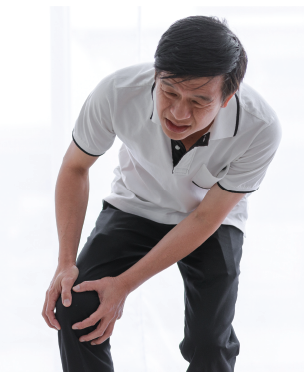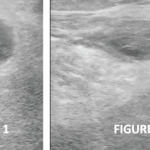
Bangkok Click Studio / shutterstock.com
Lipoma arborescens is a rare, benign intra-articular lesion characterized by diffuse replacement of synovial tissue by mature adipocytes, causing a villous lipomatous proliferation of the synovial membrane.1 Typically, this is a monoarticular condition, with the knee being the most commonly affected although it has been rarely reported to occur in an oligo-/polyarticular fashion and in the subdeltoid bursa, glenohumeral joint, wrist, hip, elbow and ankles.2-6
The highest incidence of presentation occurs in the fourth and fifth decades of life.7 Originally, lipoma arborescens was thought to be more common in men, but recent studies indicate both sexes are affected equally.8
In this case, we present a patient with a history complicated by gout who sought care due to knee pain and was found to have lipoma arborescens of the knee after excluding other rheumatic disease.
Case Report
A 60-year-old man with a past medical history of gout, glaucoma and cerebral aneurysm presented to the emergency department due to right knee pain and weakness. He had been diagnosed with gout several years before and had since been treated with allopurinol to maintain low disease activity.
He reported that he had been having significant right knee pain for the past four days. The pain was constant, worsened with walking and improved with rest. The pain was associated with some weakness in his right lower leg. On questioning, the patient indicated that he had never had any major injury to the knee or recent trauma and that he had a history of intermittent right knee pain, although less severe than this current episode: He was admitted to the hospital several months before due to muscle cramping. He was diagnosed with a polyarticular acute gout flare and was subsequently treated with prednisone.
The patient reported some weight loss, but denied fevers, rashes, calf pain and pain in his other joints. A rheumatologist was consulted due to the patient’s history of gout.
On musculoskeletal exam, his knee was cool to the touch, with tenderness of the suprapatellar tendon and medial anserine bursa. Suprapatellar fullness was observed, and the patient had a limited range of motion of the joint, with pain disproportionate to the exam.
Laboratory testing demonstrated positive anti-nuclear antibody with a titer of 1:160 and normal complement levels. A glomerular basement membrane test was negative, as were tests for rheumatoid factor (RF) and anti-neutrophil cytoplasmic antibody. The erythrocyte sedimentation rate (ESR) was elevated to 74 mm/hr (reference range [RR]: 0–22 mm/hr for men), and the C-reactive protein was elevated to 40.1 mg/L (RR: <5–10 mg/L).
RF and anti-cyclic citrullinated peptide (CCP) antibody tests were negative during his previous admission.

